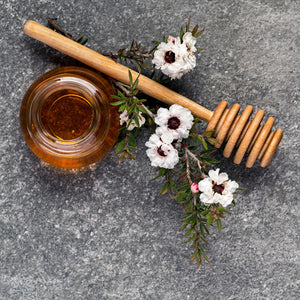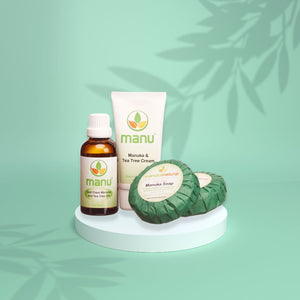
Does your dog have joint pain?
After this questionnaire, you will definitely know if deer antler velvet is helping your dog with joint pain
Your dog is getting older. It’s a its a dog with joint pain
He has weakness in his hind quarters and foot dragging that leads to nail bleeding. As a result, your trusted bow-wow could not negotiate stairs.
And you tried multiple remedies, including acupuncture.
Some folks may laugh at you for doing so, but I get it. Your family household would never be the same without your pet rocketing around.
So, how can you help them?
A vet can only prescribe several things as a last resort, including steroids, which, I’ll be honest, may help to an extent. However, those drugs are not entirely intended for animal use, even though your vet will tell you differently.
Steroids may bring your pet horrible side effects even at the lowest dose (extreme thirst and hunger, constant uncontrollable urinating in the house, panting and irritability, etc.)
But, as I like to say, it doesn’t get better with age, but it doesn’t have to get bad either.
What are the first signs of dog joint pain?
Arthritis affects one in five adult dogs, and as many as 80% of dogs are 8 years old or older! In addition, dog joint pain also occurs in obese dogs or dogs with a genetic predisposition.
Arthritis in dogs is considered a chronic disease and cannot be cured. However, its progression can be alleviated and slowed big time.
Regardless of the type of arthritis, early diagnosis helps keep the disease from progressing, and understanding that it can help you slow or prevent further disease development.
The most common symptoms of arthritis in dogs are:
- limping or lameness,
- stiff gait,
- moaning,
- loss of muscle mass,
- fatigue,
- irritability,
- licking or chewing areas that can be painful,
- stiffness (especially after rest or after walking),
- slowing down in walks,
- lethargy,
- enlarged or swollen joints,
- pain when touching joints,
- the dog is quiet, grumpy, or sleeps more.
If you think your dog is going in an arthritic way, consult a veterinarian for a complete health examination and advice. The veterinarian may recommend additional X-rays to diagnose the condition.
What can I give my dog for arthritis?
First, your time and your love.
Check? Alrighty then!
You can try several things, but please keep in mind that the best solutions come from nature.
- Drop his/her weight by about 10 pounds, and Keep your dog moving!
- You can let them swim for exercise if you live near a lake. It’s low impact and will help build muscle without hurting joints.
- Giving them glucosamine supplements, omega 3,
- Exercise them in the grassy backyard more and take on shorter walks around the neighborhood.
- Having a heating pad or something cozy under them for nighttime is also helpful.
DEER ANTLER VELVET FOR DOGS WITH ARTHRITIS

Although relatively new to the modern dog supplement market, deer velvet antler has been used by the Asian and North Americans for centuries as a powerful health tonic.
Therapies based on New Zealand deer velvet can provide a natural treatment to help relieve symptoms associated with joint problems caused by osteoarthritis in pets.
Deer velvet antler for medicinal uses has been researched extensively by Dr. Subhuti Dharmananda, director of the Institute for Traditional Medicine.
He concludes: “You can trace the story of deer antler back to the first Chinese Materia Medica, Shennong Bencao Jing (ca. 100 A.D.), where it is described briefly.”
There is also earlier use of deer antler found in an archeological find (a set of silk scrolls named Wushier Bingfang, (dated 168 B.C.).
In 2013, a team of scientists reviewed the literature and research on DVA from 1980 to 2012 and conducted a paper in the Journal of Ethnopharmacology.
The information was sourced from ancient Chinese herbal classics, pharmacopeias, scientific journals, hard copy books, PubMed, Google Scholar, Web of Science, Science Direct, and CNKI (in Chinese).
The authors concluded: “Both in vitro and in vivo pharmacological studies have demonstrated that deer antler base possesses immunomodulatory, anti-cancer, anti-fatigue, anti-osteoporosis, anti-inflammatory, analgesic, anti-bacterial, anti-viral, anti-stress, antioxidant, hypoglycemic, hematopoietic modulatory activities.…“
Much of the recent research on deer antler velvet focuses on the unique function of antler polypeptides. Wang et al’s research concluded that antler polypeptides promoted the rapid growth and differentiation of bone marrow-derived stem cells, suggesting that antler polypeptides may help promote bone growth and regeneration.
DEER ANTLER VELVET IS SAFE FOR DOGS
Some drugs intended for people are toxic for pets. However, deer antler velvet is not harmful to dogs or cats. You can give DAV to a dog with joint pain.
Regarding side effects from DAV, no adverse effects, including renal or hepatotoxicity, were noted in any of the studies – even combined with other supplements and pharmaceuticals.
Because no dog wants to stay home.
What can a deer antler velvet do for your dog’s joint pain?
-
Joint function, mobility, and arthritis relief
• Muscle and connective tissue development and strength
• Immune support
• Vitality and general wellbeing
• Endurance and durability
• Red blood cell production
• Oxygen carrying capacity
• Speedy tissue recovery
• Recuperation after surgery
• Optimal reproductive activity
• Reducing inflammation after injury or exercise
• Cardiovascular health
Why deer antler velvet for your dog?
Members of the family red deer are the only mammals who fully regenerate organized tissue in an annual cycle- bone antlers.
Antler regeneration is a stem cell-based process. It is made by stem cells that typically develop bony growth from the tip of the antler.
Velvet antlers grow at a rate of up to 2 cm a day and mature after 90 days.
The unique compounds that make this dynamic process possible make DAV a unique and valuable ingredient in human and veterinary nutraceuticals.
A study on dogs taking deer antler velvet
This study included dogs weighing more than 20 kg and older than 18 months. All dogs had radiographic evidence of OA in 1 or more joints.
Also, dogs in this study have never been treated with corticosteroids.
The experimental protocol was approved by the Animal Care and Use Committee of the Université de Montréal.
Owners were asked to score performances in daily life activities by using an owner’s assessment form. Scores for each activity were then summated to generate a score for activity performances.
FOR 6 MONTHS, they received 2, 3, and 4 capsules of deer antler velvet daily. Each capsule contained 280 mg.
In these 13 dogs, 9 owners reported an increasing vitality after 60 days of treatment with deer antler velvet.
Increased mobility was significantly higher in the deer antler velvet group (18/25), and for the hips subset issues (14/19).
The owners’ dogs who took the supplement demonstrated a beneficial response. At home, arthritic dogs improved their physical performances, accompanied by increasing vitality.
This may be because velvet antler contains collagen as a significant protein; a small number of glycosaminoglycans, primarily as chondroitin sulfate; a peptide of 68 amino acids called pilose antler peptide, and an alcohol extract known as pantocrin.
Chondroitin sulfate possesses documented antiarthritic effects. So it’s of much assistance to a dog with joint pain.
The beneficial effects of QEVA could be associated, in part, with the anti-inflammatory action of pilose antler peptide and with the activity of pantocrin.
Therapeutic claims reported for pantocrin include:
- Increased work capacity.
- Increased recovery from training.
- Decreased skeletal muscle fatigue (adaptogenic properties).
- A stimulating effect.
Overall the study found the administration of velvet was effective in alleviating the condition in arthritic dogs. (1)
THE QUESTIONNAIRE
Please grade the tasks below before you give your pet deer antler velvet, and then do it once more after 60 days.
Walking approximately 15 minutes ✔
Gait after 15 minutes of walking ✔
Running approximately 10 minutes ✔
Gait after 10 minutes of running ✔
Climbing stairs ✔
Going downstairs ✔
Getting up after a long rest ✔
Sitting down ✔
Climbing in the car, over objects ✔
0 — No difficulty in performing this activity
1 — Slight and occasional difficulty in performing this activity
2 — Slight and constant problem in performing this activity
3 — Evident difficulty in performing this activity
4 — Can no longer execute this activity
Best Source for Deer Antler Velvet
Did you know that the world’s largest producer of Deer Antler Velvet is New Zealand? And it is also the safest for the following two reasons:
New Zealand DAV is free from Chronic Wasting Disease, which affects deer and elk in North America, Europe, and other parts of the world.
This disease can be fatal in animals and cause Creutzfeldt-Jakob Disease (CJD) in humans.
New Zealand DAV is also ethically farmed. The National Velveting Standards Body (NVSB) governs the antler velvet industry in New Zealand. This means a trained and licensed NVSB veterinarian oversees and monitors antler processing.
In the end …
You are maybe wondering…
How to make life easier for your dog this second?
In addition to taking preventative measures, you can take some other actions to keep your best four-legged friend in top shape.
Exercising is always a good idea! It will maintain joint mobility and strengthen muscles.
Consider physical therapy – massage, acupuncture – all of which help maintain joint mobility, tendon elasticity, and muscle condition and reduce pain and inflammation.
What you can still do is lift the bowls of water and food from the floor to a higher surface so that your pal does not have to bend over, as well as get him a crib made of memory foam.
Your ‘deer’ dog will thank you!

Please share this with your social media contacts or anyone you think could benefit from manuka honey.
ORIGINALLY PUBLISHED on blog.manukanatural.com



发表评论